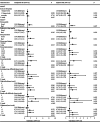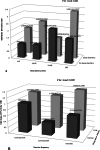Associations of sleep quality and exercise frequency and the risk of coronary heart disease in Chinese urban elderly: a secondary analysis of cross-sectional data
- PMID: 37940903
- PMCID: PMC10631020
- DOI: 10.1186/s12889-023-17077-6
Associations of sleep quality and exercise frequency and the risk of coronary heart disease in Chinese urban elderly: a secondary analysis of cross-sectional data
Abstract
Background: Sleep quality and exercise frequency are closely associated with coronary heart disease (CHD). Few studies focused on the joint effect of initiating sleep, sleep disorders, and exercise frequency on the risk of CHD in the elderly. We used a secondary data analysis based on Boshan Elderly cross-sectional study. We explored the sleep quality, exercise frequency, and their joint effects on the risk of CHD.
Methods: We collected 678 participants whose age ≥ 60 years old from Boshan District Hospital. We used the Pittsburgh Sleep Quality Index to evaluate the sleep quality and obtained physical examination information from the hospital.
Results: Compared with the non-CHD group, patients with CHD spent more time in initiating sleep (time ≥ 60 min, 34.59% vs. 22.93%, P = 0.025) and less time exercising (exercise frequency < 1 times/week, 23.90% vs. 17.15%, P = 0.024). In multiple logistic regression analysis, sleep latency ≥ 60 min was associated with CHD risk (adjusted OR = 1.83; 95% CI: 1.11, 2.99; P-trend = 0.008). The adjusted OR (95% CI) of CHD was 2.24 (1.16, 4.34) for sleep duration < 5 h versus 5-9 h. Compared with exercise frequency < 1 times/week, the adjusted OR for exercise frequency ≥ 1 times/week was 0.46 (95% CI: 0.26, 0.83; P = 0.010). In addition, the joint effects of long sleep latency (≥ 60 min) and sleep disorders were associated with CHD (adjusted OR = 3.36; 95% CI: 1.41, 8.02). The joint effect of exercise frequency ≥ 1 times/week and sleep onset latency within normal limits (< 30 min) was also associated with CHD, and the adjusted OR (95% CI) was 0.42 (0.21, 0.87).
Conclusions: Long sleep latency, high frequency of initiating sleep difficulty, sleep disorders, and short sleep duration were positively associated with CHD. In addition, the joint effects of long sleep latency and sleep disorders were positively correlated with CHD incidence. However, the joint effects of exercise frequency ≥ 1 times/week and normal sleep onset latency were negatively associated CHD.
Keywords: Coronary heart disease; Elderly; Exercise frequency; Initiating sleep; Sleep disorder; Sleep duration.
© 2023. The Author(s).
Conflict of interest statement
The authors declare no competing interests.
Figures



Similar articles
-
The association of cortisol/testosterone ratio and sleep quality with coronary heart disease: A case-control study in Chinese rural population.Steroids. 2023 May;193:109197. doi: 10.1016/j.steroids.2023.109197. Epub 2023 Feb 10. Steroids. 2023. PMID: 36773705
-
The association of sleep quality and night sleep duration with coronary heart disease in a large-scale rural population.Sleep Med. 2021 Nov;87:233-240. doi: 10.1016/j.sleep.2021.09.013. Epub 2021 Sep 27. Sleep Med. 2021. PMID: 34644677
-
Sleep quality and risk of coronary heart disease - a prospective cohort study from the English longitudinal study of ageing.Aging (Albany NY). 2020 Nov 16;12(24):25005-25019. doi: 10.18632/aging.103866. Epub 2020 Nov 16. Aging (Albany NY). 2020. PMID: 33202376 Free PMC article.
-
Eszopiclone for insomnia.Cochrane Database Syst Rev. 2018 Oct 10;10(10):CD010703. doi: 10.1002/14651858.CD010703.pub2. Cochrane Database Syst Rev. 2018. PMID: 30303519 Free PMC article.
-
Effects of physical activity on sleep quality and wellbeing.Hosp Pract (1995). 2024 Feb-Apr;52(1-2):13-18. doi: 10.1080/21548331.2024.2320069. Epub 2024 Mar 4. Hosp Pract (1995). 2024. PMID: 38407170 Review.
References
-
- Benjamin EJ, Muntner P, Alonso A, et al. Heart disease and stroke statistics-2019 update: a report from the American heart association. Circulation. 2019;139(10):e56–e528. - PubMed
-
- Fiuza-Luces C, Santos-Lozano A, Joyner M, et al. Exercise benefits in cardiovascular disease: beyond attenuation of traditional risk factors. Nat Rev Cardiol. 2018;15(12):731–743. - PubMed
-
- Mora JC, Valencia WM. Exercise and older adults. Clin Geriatr Med. 2018;34(1):145–162. - PubMed
Publication types
MeSH terms
LinkOut - more resources
Full Text Sources
Medical

